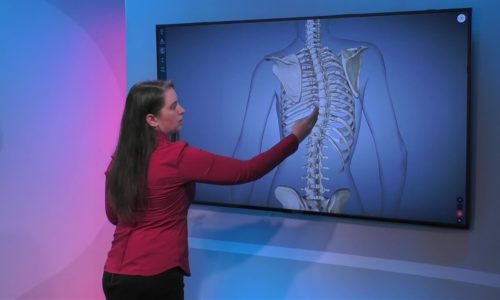Herniated Disk and Overweight |
Dr. Ronald Tolchin, Medical Director at Baptist Center for Spine Care, explains a herniated disc is when that nucleus or gel within the disc starts to migrate out beyond the edges of the disc.
He says in surgery they can see how the gel is migrated out, it’s pushing on the nerve, and it’s going to cause sciatica, which is the irritation of the nerve by something either the disc, or the bone behind it pushing on it, squeezing it, and causing pain down the leg.
Transcript
Let’s first of all me with what exactly is a herniated disc, so a herniated disc is when that nucleus or gel within the disc starts to migrate out beyond, beyond the edges of the disc, and you could see in the graphic here, that the inner core of the disc, this is a slice through the disc, the inner core is migrating out and it’s touching the nerve right there where it’s red, and yellow -cursor right there you have the pad right there-, certainly so you can see this is the disc it should be contained within this outer band, this connective tissue band, and it should be round all the way around, you can see that the gel, and it actually in surgery it actually looks like crabmeat, I mean a young healthy disc, and you could see that it’s migrated out and it’s pushing on this nerve, and it’s going to cause what’s called sciatica, sciatica essentially is the irritation of the nerve by something either the disc, or the bone behind it, pushing on, it squeezing it, and causing pain down the leg, that is what sciatica’s follows the distribution of the largest nerve called the sciatic nerve, and that’s how that works, so in this case this is the herniated disc pushing on it causing side okay, and people that are obese have higher risk of injuring this disc, and so that’s what I was talking about earlier, I also mentioned these joints back here called the facet joints, if they get stressed then they start to have these spurs that come off of them, and that can push from behind on the nerve as well causing the same sciatica, so I tell patients going back to your former question, that I tell them baby steps, let’s lose a few pounds at a time, I give an analogy one pound of excess weight here, is equivalent to about 30 pounds of force on the back, so if they can lose 5 pounds that’s a huge opportunity to decrease the load on the back.








